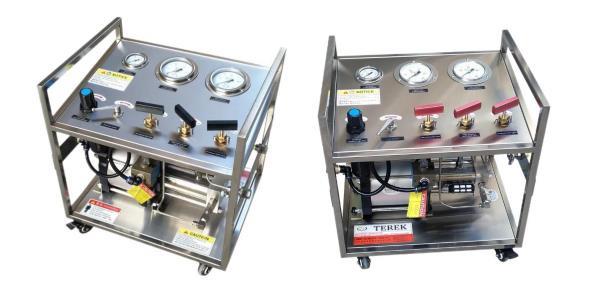3 Things You Should Know about Oxygen Booster Pump

A mechanical device designed to enhance the pressure of oxygen gas from a low inlet pressure to a higher outlet pressure is known as an oxygen booster pump. It provides a steady and dependable supply of oxygen for a variety of purposes, including medical facilities, industrial processes, and research. Booster pumps improve oxygen delivery by compressing the gas, allowing for more efficient storage, transit, and consumption while meeting safety norms and regulations.

Key Components of an Oxygen Booster Pump
Key components of an oxygen booster pump include the air/oxygen inlet, compression chamber, pistons/diaphragms, cylinder/pressure vessel, intake and exhaust valves, drive mechanism, cooling system, pressure relief valve, pressure gauges, filtration system, seals/gaskets, control system, and outlet connection. These parts collaborate to efficiently and safely increase the pressure of oxygen for diverse applications.
How Does an Oxygen Booster Pump Work?
An oxygen booster pump operates by using mechanical means to increase the pressure of incoming low-pressure oxygen or air to a higher desired level. Here's how it works:
1. Intake and Compression: The pump draws in low-pressure oxygen or air from the inlet. Inside the compression chamber, either pistons or diaphragms create a confined space. As these components move, the gas volume decreases, leading to compression. This process raises the pressure of the gas.
2. Valves Regulation: Intake and exhaust valves control the flow of gas into and out of the compression chamber. During the compression stroke, the intake valve opens to allow gas in, while the exhaust valve remains closed to prevent backflow.
3. Pressure Increase: The repetitive movement of pistons or diaphragms continues to compress the gas, progressively increasing its pressure within the compression chamber.
4. Cooling: The compression process generates heat, which can be harmful. A cooling system dissipates this heat, preventing overheating and ensuring safe operation.
5. Pressure Monitoring: Pressure gauges provide real-time pressure readings, allowing operators to monitor and adjust the compression process to achieve the desired pressure level accurately.
6. Pressure Relief: A pressure relief valve ensures that the gas doesn't exceed safe pressure limits. If pressure becomes too high, the valve releases excess gas, preventing over-pressurization.
7. Outlet Discharge: Once the desired pressure is achieved, the high-pressure oxygen is discharged through the outlet connection, ready for distribution or storage.
By following these steps, an oxygen booster pump efficiently increases the pressure of oxygen or air, catering to diverse applications like medical facilities, industrial processes, and more. It ensures a reliable supply of high-pressure oxygen while adhering to safety standards.
Main Applications of Oxygen Booster Pumps
Oxygen booster pumps find essential applications in various industries where a reliable and elevated supply of high-pressure oxygen is crucial. Some main applications include:
1. Medical Facilities: Oxygen booster pumps ensure consistent high-pressure oxygen supply for medical applications, such as respiratory therapies, anesthesia, and life support systems.
2. Industrial Processes: Industries like metal cutting, welding, and glass manufacturing rely on oxygen booster pumps to provide elevated pressure for efficient combustion and chemical reactions.
3. Aerospace: Booster pumps assist in filling high-pressure oxygen tanks for space exploration and aviation applications, including aircraft and spacecraft systems.
4. Diving and Subsea Operations: Oxygen booster pumps support diving operations by filling high-pressure oxygen tanks for scuba diving and underwater exploration.
5. Ozone Generation: Oxygen booster pumps aid in producing ozone for water treatment and disinfection processes in municipal and industrial settings.
6. Laboratories and Research: High-pressure oxygen is essential for laboratory experiments, research studies, and specialized equipment requiring controlled gas environments.
7. Chemical Processing: Oxygen booster pumps contribute to chemical reactions, oxidation processes, and synthesis reactions in various chemical manufacturing operations.
Conclusion
The oxygen booster pump is critical in many sectors due to its consistent high-pressure oxygen delivery. It is crucial in medical treatment, industrial operations, aerospace, research, and emergency situations. It contributes significantly to healthcare, manufacturing, and scientific developments by improving processes, assuring safety, and supporting important applications.
Have any interests? Contact us.
- Art
- Causes
- Crafts
- Dance
- Drinks
- Film
- Fitness
- Food
- Games
- Gardening
- Health
- Home
- Literature
- Music
- Networking
- Other
- Party
- Religion
- Shopping
- Sports
- Theater
- Wellness


